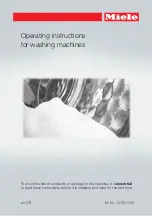
3. SERVICE TABLES
3-1. BIT SWITCHES
WARNING
Do not adjust a bit switch that is described as "Not used", as this may cause the machine to
malfunction or to operate in a manner that is not accepted by local regulations.
Bit Switch 0
FUNCTION
SETTINGS
COMMENTS
0
Not used
1
Rx cable equalizer
0: Disabled
1: Enabled
Set this bit to 1 when there is a serious signal loss at
higher frequencies during reception. The cable
equalizer will amplify the signal in this range by +3
dBm.
2
DIS detections
0: Once
1: Twice
The machine will send DCS (G3 set-up signal) if it
receives DIS. If echoes are frequent, setting this bit
to 1 will allow the machine to wait for the second DIS
before sending DCS.
3
TSI (RTI) printout on
received copies
0: Disabled
1: Enabled
If this bit is 1, the TSI or RTI received from the
sender will be printed on the top of each page.
4
Burst error threshold/
error line ratio
0: 6 (12) [24] lines/10%
1: 3 (6) [12] lines/5%
If there are more consecutive error lines in the
received page than the threshold specified by this bit,
the page is rejected. Values in parenthesis ( ) are for
Detail resolution, and those in square brackets [ ] are
for Fine resolution.
Also, if the number of error lines divided by the total
number of lines reaches the ratio determined by this
bit, the machine will send RTN to the other end.
If you want to receive messages with fewer error
lines, set this bit to 1.
5
Training error threshold
0: 4 bits
1: 1 bit
If the machine detects more errors during training
than the number set by this bit, training fails and the
machine will send FTT to ask the other terminal for
modem rate shift-down.
Set this bit to 1 if you want to receive messages at a
more reliable modem speed.
6
Initial Rx modem rate
0: 9,600 bps
1: 4,800 bps
The setting of this bit is used to inform the sending
machine of the initial starting modem rate for the
machine in receive mode. If 9,600 bps presents a
problem during reception, use 4,800 bps.
7
Back to back test
0: Disabled
1: Enabled
Set this bit to 1, when you want to test a back-to-
back communication.
Important Notice for Back-to-Back Mode
When in back-to-back mode, you cannot enter service mode unless you exit back-to-back mode first. This is be-
cause the machine starts communication if you press Start - Stop - and so on to enter service mode while you are
still in back-to-back mode.
Refer to the notice in section 2-2-12 for how to exit back-to-back mode.
3-1
















































